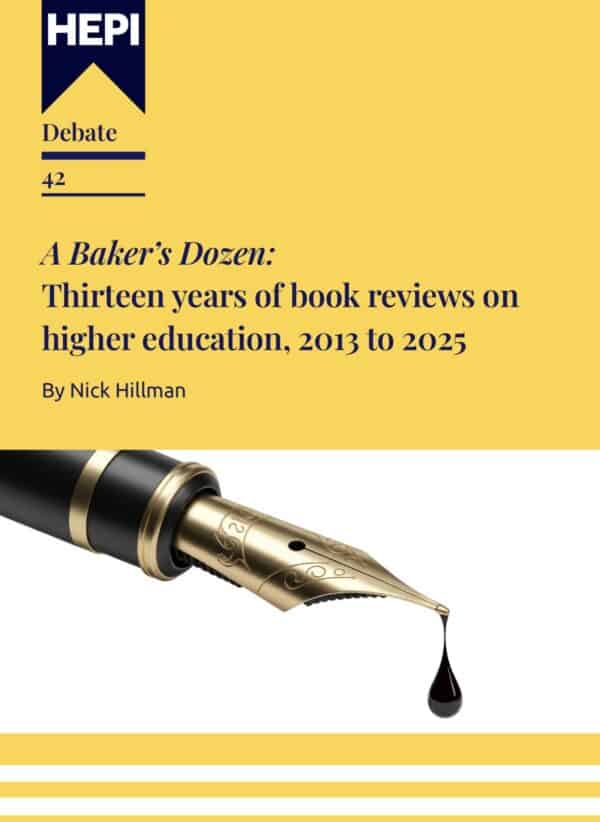Loneliness Is Causing Physical Harm in Students – Why Universities Need to Treat Loneliness Differently
This HEPI blog was kindly authored by Rupert Houghton, a Student at Magdalen College School.
Loneliness is a fundamental part of being human, and it occurs as a part of everyone’s life at some point. But today’s world, and the changes in the way we all interact mean that loneliness has found new, easier ways to enter the lives of many people, and particularly, younger people. The statistics on this are clear:
- Of students surveyed, over 60% felt lonely at least once a week (HEPI and Advance HE)
- Only 3% ‘never’ felt lonely, whereas 6% felt ‘always’ lonely (HEPI and Advance HE)
- 10.3% of British secondary school students feel ‘often or always’ lonely (ONS)
- 43% of 16 to 24-year-olds in the UK would feel uncomfortable about admissions that they feel lonely (YouGov)
Loneliness is clearly a big issue for those in higher education and for those about to enter it. There are some schemes and policies to attempt to counteract this, but what is often not considered when it comes to policymaking is that loneliness is a physical condition, not just one based on feelings. How, then, should loneliness be thought of differently?
An important fact to remember when dealing with loneliness is that humans are not merely social out of choice, but out of evolutionary necessity. Pre-agrarian humans (before the Agricultural Revolution 7000 years ago) operated in groups, and they depended on each other to fulfil different roles for the group’s overall survival. As a result, humans evolved to seek out positive social relationships as working with others was crucial to our survival.
Loneliness is used to signal to the brain that a person’s social inclusion, and therefore survival, is at risk, and the brain therefore starts fighting for survival. Social rejection uses the same neural networks as physical pain, and causes a minor stress response in the brain. Loneliness is merely the prolonged and sustained activation of this stress response and so puts physical stress on the mechanisms within the brain that cause it.
When this response is elicited, the brain starts to transition itself into a socially hyper-alert state, as it attempts to preserve existing positive relationships, and minimise the number of negative interactions experienced. Studies have shown that the brain changes its own structure to accommodate this and changes the way facial expressions are read. Lonely individuals show a heightened sensitivity to negative social stimuli, including negative facial expressions, words, phrases, or pictures. They were shown to more quickly and accurately spot negative social cues but were also seen to mislabel neutral and even positive social cues as negative more often than their non-lonely counterparts.
In a pre-agrarian human social structure, this problem would have been resolved relatively quickly. It was necessary to work together in groups to survive, which would force a degree of socialisation. To avoid social rejection, an individual would perhaps change some aspects of their own behaviour and be able to pick up on the reaction of their peers, and so change to be better accepted into the group, which would enforce more positive social relationships.
Nowadays, however, it is harder for this process to take place. Instead, it is far easier for people to spend more time alone or reduce the time they spend socialising. The changes in neural pathways therefore start to have a different effect on a lonely person’s behaviour. As they become more sensitive to negative social stimuli, their brain can view them as ‘threatening’, and attempts to prevent exposure to them, causing them to self-isolate. This, rather than fixing the problem only exacerbates the perception of low social standing, increasing the feeling of loneliness.
The main physical impacts of loneliness come from its effects on the hormones secreted by glands within the brain. One of these hormones is cortisol, often called the ‘stress hormone’. Loneliness has been shown to make the brain overwork and produce more cortisol than it would ordinarily. This leads to a number of detrimental health effects: high levels of cortisol have been linked to chronic inflammation, disrupted sleep cycles in young adults, and raised blood pressure.
Loneliness is clearly becoming an endemic problem, particularly in secondary and higher education and is having a very real effect on students’ health. Loneliness is a self-perpetuating condition and something that easily becomes chronic, so it is therefore best to prevent it before it begins. The policy focus must be placed on making students aware of loneliness before it can start to impact on people’s education and wellbeing. Whether that be through making universities give more open information on loneliness, how to keep social, or ensuring that students are informed about how the choices made could affect their risk of loneliness, starting a conversation about it before it becomes a problem should be a priority.







Comments
Ron Barnett says:
Where it occurs, loneliness among students is an important matter – but we do need to know its extent and its causes and even its nature in higher education. It may be growing, even though a student today is immersed in an infinity of experiences, other people, other encounters. So how account for THAT?
Higher education is becoming a solitary affair, even against the horizons of its intermingling, its discursive and cultural complexity, and its complexity?
Much here to untangle further!
Ron Barnett
Reply
Paul Wiltshire says:
The HE Sector’s embracing of on-line teaching that corrupts young adults into willingly isolating themselves in their bedrooms rather than getting out in the world, can hardly be helpful and must be having an effect on the prevalence of lonliness. Which is why it is shameful that the OfS continue to allow every single University in the country to not declare how much of their teaching is online or in-person, even though they have a clear duty to do so under CMA guidelines.
Reply
Add comment